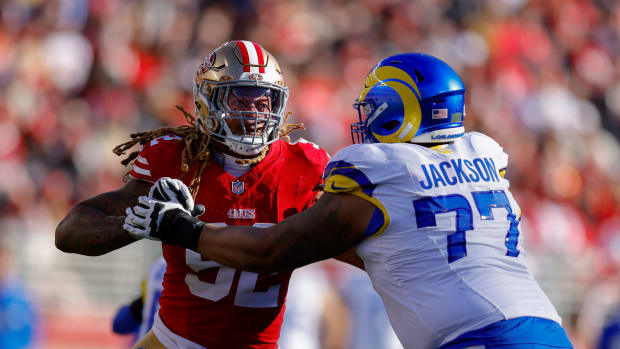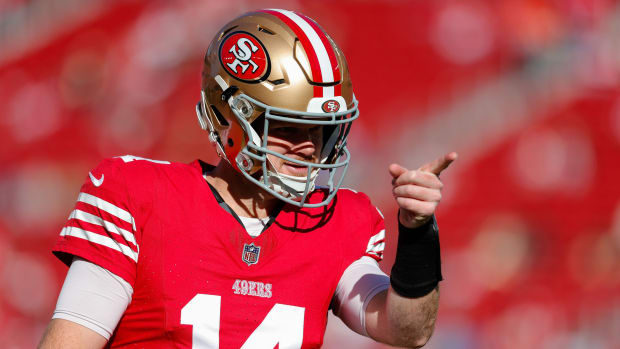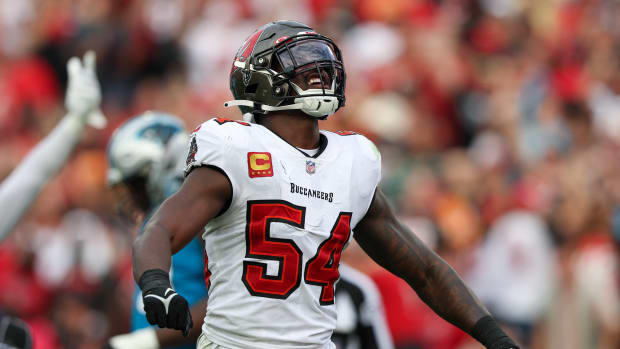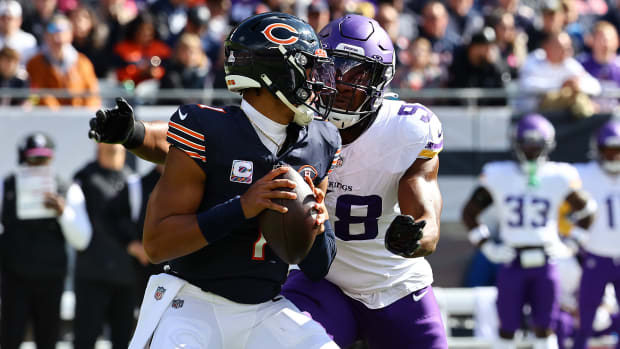Scouting Cincinnati: A Different Hue of Offense
1. There’s a lot of pressure on first-time offensive coordinator Ken Zampese, who is replacing the top OC in football last year, Hue Jackson. So much of Cincinnati’s success stemmed from Jackson’s crafty use of formations, presnap motioning and shifting, and how he diversified where receivers and tight ends lined up. It was an academic approach to football that played to Andy Dalton’s strengths as a chess master type quarterback. Jackson is known for his confidence; Zampese is known for his humility. It will be interesting to see how much of Jackson’s tactics Zampese keeps and which of his own he installs.
2. Last season, no team in the AFC was as deft as the Bengals at attacking the seams. Having quality downfield wide receivers—including A.J. Green, one of the league’s very best—was a big factor in how the seam-route concepts were constructed and executed. Expect more. Seam routes really suit Dalton. They’re downfield throws that require touch more than arm strength. They also involve reading safeties and linebackers, something Dalton has grown better at doing.
• SCOUTING ALL 32: Andy Benoit’s analyses are rolling out daily
3. Cincinnati features a classic gap-scheme rushing attack, where blockers have man assignments rather than zone. Staple gap scheme runs include “power,” with a guard pulling to the strong side, and “counter,” with a guard pulling to the weak side. The Bengals are blessed to have two very capable move-blocking guards in Clint Boling and Kevin Zeitler. That gives their ground game more dimensions. And tailback Jeremy Hill, if he bounces back from a bad 2015 and regains his rookie form, is a good stylistic fit for this.
4. Left tackle Andrew Whitworth is still a maestro of technique, both in run- and pass-blocking. He did, however, struggle down the stretch last year. We’ll soon find out much of that was 34 years of age catching up to him. One idea is to move Whitworth to guard. He was sensational filling in here late in the 2013 season. If the Bengals weren’t so sound at that position, this move would probably have already happened, given the team’s youthful depth at tackle.
5. Tight end Tyler Eifert (currently out with an ankle injury suffered in the Pro Bowl) is as important as ever. With the wide receiving corps reshuffled—goodbye Marvin Jones and Mohamed Sanu; hello Tyler Boyd and Brandon LaFell—Eifert is a beacon of familiarity to Dalton, especially as a movable piece in the red zone. Dalton is a QB who needs the system to be executed precisely and on time. Eifert is critical to that.
6. Cincy’s defense has a very distinct identity: two-high safety coverages. That’d be Cover 2, Cover 4 (aka “quarters”) and 2-man (man-to-man across the board with two safeties helping over the top.) To play this way, you need a quality four-man pass rush and rangy linebackers.
• LIFE ON THE ROAD: The Brotherhood of the Traveling Khaki Pants
7. Last season, coordinator Paul Guenther called blitzes less often than any defensive play-caller in the NFL. But when he dialed up pressure, or even just threatened it, the Bengals were highly effective. Guenther has continued the double A-gap mantra of his predecessor, Mike Zimmer. When you walk two linebackers up into the A gap (between the center and guard), you dictate one-on-one blocking for your edge rushers. Even if the A-gappers don’t actually blitz, you still create one-on-ones outside. (The offensive line has no way to know that the A-gappers won’t blitz and so they have to come off the snap under the assumption that they are blitzing.) Out of double A-gap, the Bengals are very good at disguising underneath coverages, as well as setting up slot blitzes from it.
8. Vontaze Burfict is a critical piece in the double A-gap scheme. In fact, he’s critical in every facet of the scheme. He’s a tricky guy to coach; his aggression makes him effective, but too much of that aggression and he becomes reckless. This really hurt the Bengals late last season and in the playoffs. If Burfict scales everything back, say, 25 percent, he’ll be just the right amount of football crazy.
• BUSINESS-MINDED: Breaking down the issues driving the Joey Bosa-Chargers contract standoff
9. Carlos Dunlap registered a career-high 13.5 sacks last year, but was still disconcertingly inconsistent. Remember, inconsistent does not mean “bad.” It means “good and bad.” Dunlap’s good: he’s long, flexible and fast. At his best, he’s as dynamic as almost any defensive lineman in the league. His bad: despite his attributes, he’ll disappear for long stretches, even when he’s facing lesser competition.
10. Reggie Nelson will be missed. He was an important part of this defense. In the two-high coverages, Nelson’s ball skills led to 23 interceptions since 2010, second most in the league behind Richard Sherman. Nelson was also a good edge blitzer when he dropped into the box. The Bengals weren’t able to re-sign him and George Iloka, and retaining the lanky, rangy 26-year-old Iloka was the right choice. And fortunately Nelson’s replacement, Shawn Williams, has been in Cincy’s program since 2013, when he was a third-round draft pick. Nevertheless, the Bengals will have reduced depth at safety in 2016. And, most likely, they’ll just be plain downgraded at the position.
Question? Comment? Let us know at talkback@themmqb.com




































